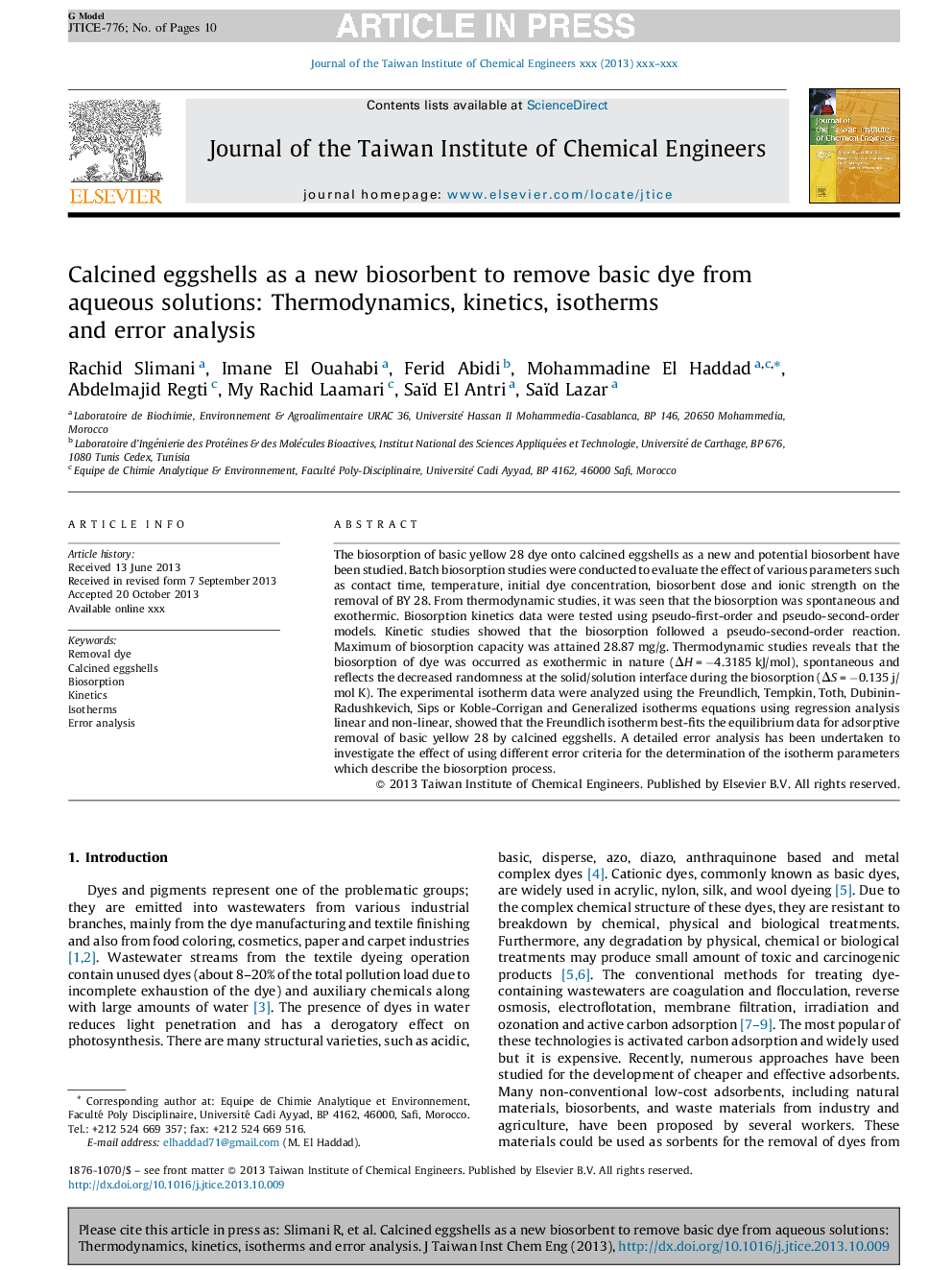| Article ID | Journal | Published Year | Pages | File Type |
|---|---|---|---|---|
| 690916 | Journal of the Taiwan Institute of Chemical Engineers | 2014 | 10 Pages |
Abstract
The biosorption of basic yellow 28 dye onto calcined eggshells as a new and potential biosorbent have been studied. Batch biosorption studies were conducted to evaluate the effect of various parameters such as contact time, temperature, initial dye concentration, biosorbent dose and ionic strength on the removal of BY 28. From thermodynamic studies, it was seen that the biosorption was spontaneous and exothermic. Biosorption kinetics data were tested using pseudo-first-order and pseudo-second-order models. Kinetic studies showed that the biosorption followed a pseudo-second-order reaction. Maximum of biosorption capacity was attained 28.87 mg/g. Thermodynamic studies reveals that the biosorption of dye was occurred as exothermic in nature (ÎH = â4.3185 kJ/mol), spontaneous and reflects the decreased randomness at the solid/solution interface during the biosorption (ÎS = â0.135 j/mol K). The experimental isotherm data were analyzed using the Freundlich, Tempkin, Toth, Dubinin-Radushkevich, Sips or Koble-Corrigan and Generalized isotherms equations using regression analysis linear and non-linear, showed that the Freundlich isotherm best-fits the equilibrium data for adsorptive removal of basic yellow 28 by calcined eggshells. A detailed error analysis has been undertaken to investigate the effect of using different error criteria for the determination of the isotherm parameters which describe the biosorption process.
Related Topics
Physical Sciences and Engineering
Chemical Engineering
Process Chemistry and Technology
Authors
Rachid Slimani, Imane El Ouahabi, Ferid Abidi, Mohammadine El Haddad, Abdelmajid Regti, My Rachid Laamari, Saïd El Antri, Saïd Lazar,
